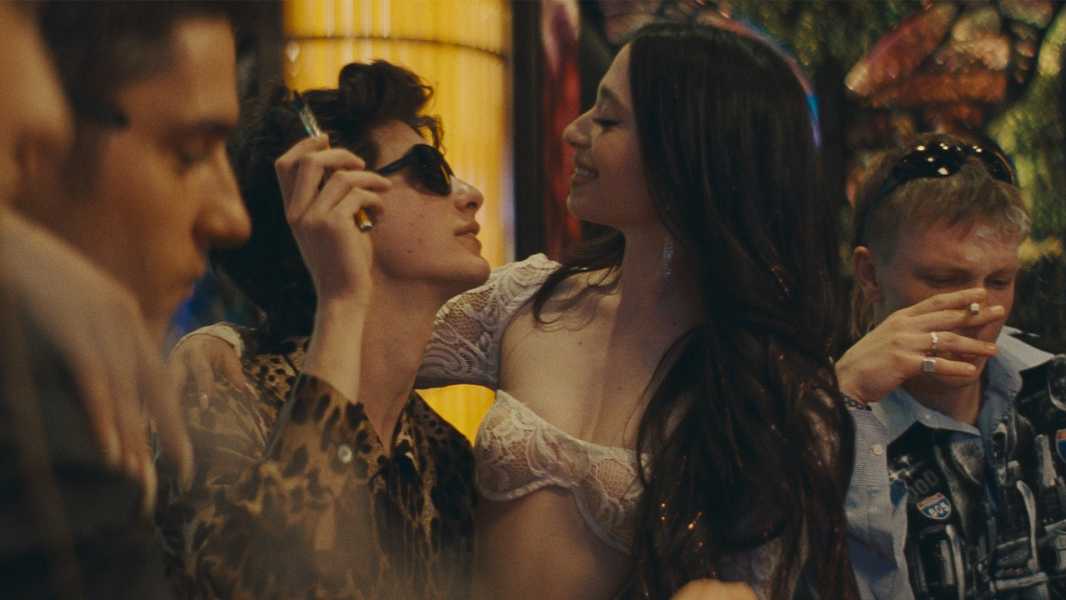
Save this storySave this storySave this storySave this story
The art of directing is inextricable from the process of producing. Many of the most original filmmakers, especially those working outside the factorylike order of classic-era studios, have devised highly personalized methods for making movies, arriving at distinctive aesthetics that both embody and arise from those methods. In that regard, Sean Baker’s new film, “Anora,” is exemplary. Baker has constructed a system of his own that generates remarkable realities along with his noteworthy works of fiction; as with previous Baker films, such as “The Florida Project” and “Red Rocket,” the story of the new one’s production is built into the story that it tells. What’s especially fascinating about “Anora” is what it brings to light about his work to date—its virtues and its flaws, and the relationship of the films’ artistic quality to the way he makes them.
“Anora” is largely set in New York City, particularly in Brighton Beach, Brooklyn, where the movie’s title character (Mikey Madison), who calls herself Ani, lives. She’s a tough-talking and spirited twenty-three-year-old sex worker at a Manhattan club. She is paired off with a client of twenty-one—a Russian man named Ivan (Mark Eydelshteyn), who goes by Vanya, goofy and profligate—because she speaks a little Russian (which she learned from her Uzbek grandmother). Vanya is taken with her and asks to see her privately. The next day, Ani heads to his sleek and modernistic mansion situated behind a guarded gate—yes, also in Brooklyn—where they have sex (he loses his virginity with her, he says). When she asks how he made his money, he first jokes that he’s a drug dealer—she believes him—then explains that he’s the son of an oligarch.
Soon thereafter, Ani attends a New Year’s Eve bash that Vanya throws at the house (his parents are in Russia). He offers her ten thousand dollars in cash to be his girlfriend for a week, and, bargaining for fifteen, she agrees. They fly to Las Vegas on his private plane and impulsively get married there. When Vanya’s parents get wind of the marriage, they contact their Brooklyn-based fixer, an Armenian priest named Toros (Karren Karagulian), who’s also Vanya’s godfather, to get it annulled. Toros sends two tough guys, an Armenian associate named Garnick (Vache Tovmasyan) and a young Russian man, Igor (Yura Borisov), to catch the couple, but Vanya runs away, and Ani is forced to join the three enforcers in a wild adventure, hunting for him through the neighborhood, the borough, and the city. In the process, Ani learns more about Vanya’s feeble character than she’d expected—and more about his parents’ brutal authority than she’d imagined.
Baker captures the action with an immediacy that’s born of his methods. He made the film entirely on location: in a real-life strip club, mansion, candy shop, restaurant, gas station, pool hall, airport, hotel, and other such places. Some of the venues were even open for business while the movie was being shot. As usual, he cast experienced actors alongside nonprofessionals and left plenty of room for improvisation. The resulting air of authenticity is palpable, yet the fast-moving action, cleverly constructed story line, and vigorous performances feel synthetic throughout. The characters move within even the grittiest spaces as if walking past backdrops or C.G.I. green screens. What’s missing from “Anora” isn’t the characters’ physical contact with locations but their mental contact. Baker never lets them express what they know or think about the places they inhabit.
Like “Anora,” other recent Baker projects have featured sex-worker protagonists surrounded by working-class characters whose daily struggles over money, work, and living arrangements play into the drama. And, in those films, too, he uses real-life locations often filmed as is—and with a similar filtering out of his characters’ inner lives. (I’ve written as much regarding “Red Rocket” and “The Florida Project.”) Baker leaves his actors’ performances as merely impressive shows, because he never lets their improvisations run far into the observed details and the intriguing experiences that emerge from the production itself. For instance, Baker’s story in an interview about how he got permission to film in an “iconic” Brighton Beach restaurant manifests a richer cinematic premise and dramatic vision than the scene he actually filmed there. The story revels in the freedom to create, but the end result is so strictly bound to dramatic logic that such freedom is all but undetectable. In “Anora,” these dramatic confines take on a particularly conspicuous significance precisely because the cast is talented and the performances are exceptional.
With “Anora,” Baker falls into one of the most woeful conventions of commercial filmmaking (whether studio or independent), the silent working class, but he does so with a difference: he has his characters talk a lot even though they say very little. The movie often plays like a comedy, partly because the action occasionally veers toward the ridiculous or the absurd—Toros, baptizing a baby in a crowded church, takes a call from Vanya’s mother—but mostly because the performances have outsized screwball energy and the flashy dialogue to go with it. Ani is a whirlwind of furious self-preservation, both physical and verbal. In the film’s most elaborate set piece, in the mansion’s spare yet sumptuous living room, she puts up a fierce fight against the two toughs, injuring both with antic glee and leaving a trail of shattered glass and wrecked furnishings. (One tends his wounds with a bag of frozen dumplings.) Throughout, she talks, fast and loud, with sublime acerbity and uninhibited audacity. Sometimes it’s just funny, as when she tells Igor that his name means “hunchback weirdo,” and sometimes it’s bitterly aggressive, as when Vanya’s mother calls her a hooker and she retorts, “And your son hates you so much, he married one to piss you off.”
But the talk always fits into the plot like cogs in a machine. Baker has a finely tuned story sense—the machine runs efficiently, and the characters are essentially workers enlisted to keep it running. Their emotional lives don’t factor into the movie except to the extent that they serve the cause; there’s no side chatter, no offhand conversation, and they don’t break the framework of their function to delve deep into experiences, memories, ambitions, dreams, and ideas. (The one freely flung opinion, when Toros inveighs against the young generation of “TikTok Instagram,” comes at a moment of fear and frustration; it’s a mask, not a discussion.) Baker clearly respects and admires Ani, and looks with rueful empathy at the severe orders and fearsome threats under which the three tough guys labor, the harsh yet frivolous upbringing that has left Vanya a terrified emotional baby. Nonetheless, his refusal to grant them free voices renders his very exaltation condescending. It’s also emptying; the actors have to do most of the work, in Baker’s stead, to create the characters, who are, in substance, little more than the appearances and the mannerisms with which the actors endow them—and the rest of the work has to be done by viewers, in the form of emotional labor, to fill in the remaining blanks by way of their own rooting interest.
As the director, screenwriter, and one of the film’s producers, Baker lets the latter role dominate—by not allowing himself, as the director, to disrupt the closed system of his own script. It’s a shrewd decision, as it keeps the movie conventional and is surely responsible for “Anora” ’s successes to date: it won the Palme d’Or at Cannes, has received near-unanimous critical acclaim, and even managed a large box-office take in its initial limited release. That’s what makes it feel like a classic movie, what gives it something of a nostalgic, studio-like charm—rather than being overbearingly produced by a studio, it’s overbearingly self-produced. But Baker’s direction is inhibited; “Anora” is a film of cinematography but not of images. It’s a movie with a distinctive look, owing to the often handheld shooting, with widescreen compositions, mostly on 35-mm. film (with some digital video for night scenes). But, here, too, Baker films his story, not even his actors. Madison is a prodigy of energy and transformative virtuosity, Eydelshteyn delivers an unusual blend of whimsy and pathos, and Borisov displays a soulful gravitas that fills the screen. But Baker’s camera sees only the characters. He neither gets close enough to the actors nor stays with them long enough to let their own personalities show through the solid veneer of the writing. He shows their exertions—and his own. His pictures illustrate and decorate and deliver a story, but they have little identity in themselves; they’re secondary, dependent, subservient. There’s a significant work of art lurking within “Anora,” but it’s confined within the limits of a potboiler. ♦
Sourse: newyorker.com






